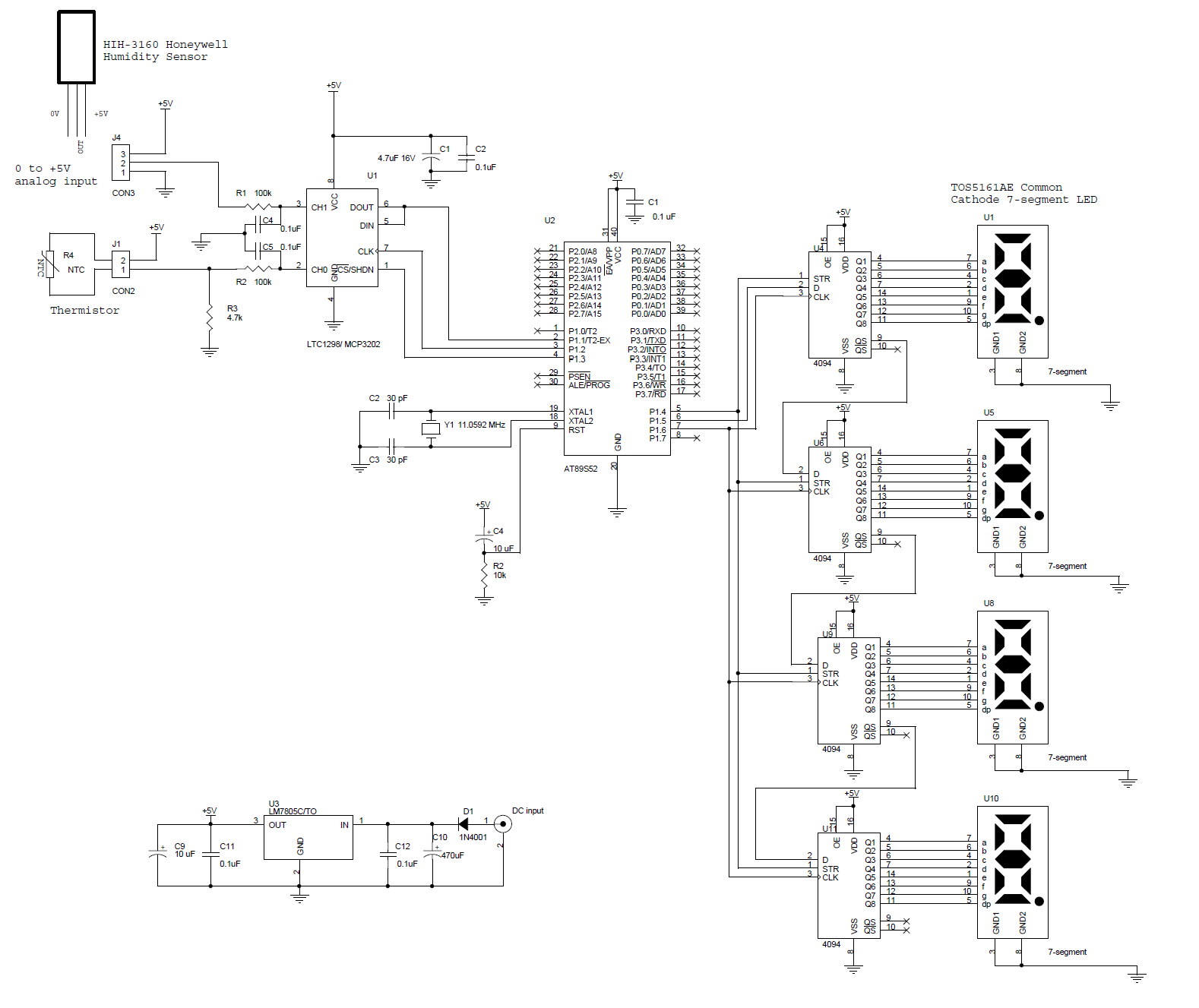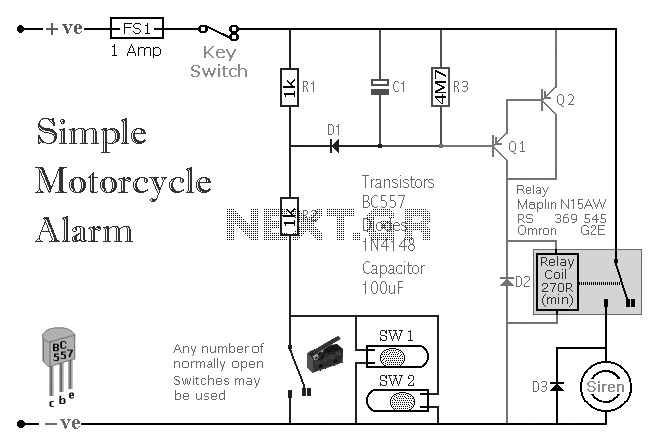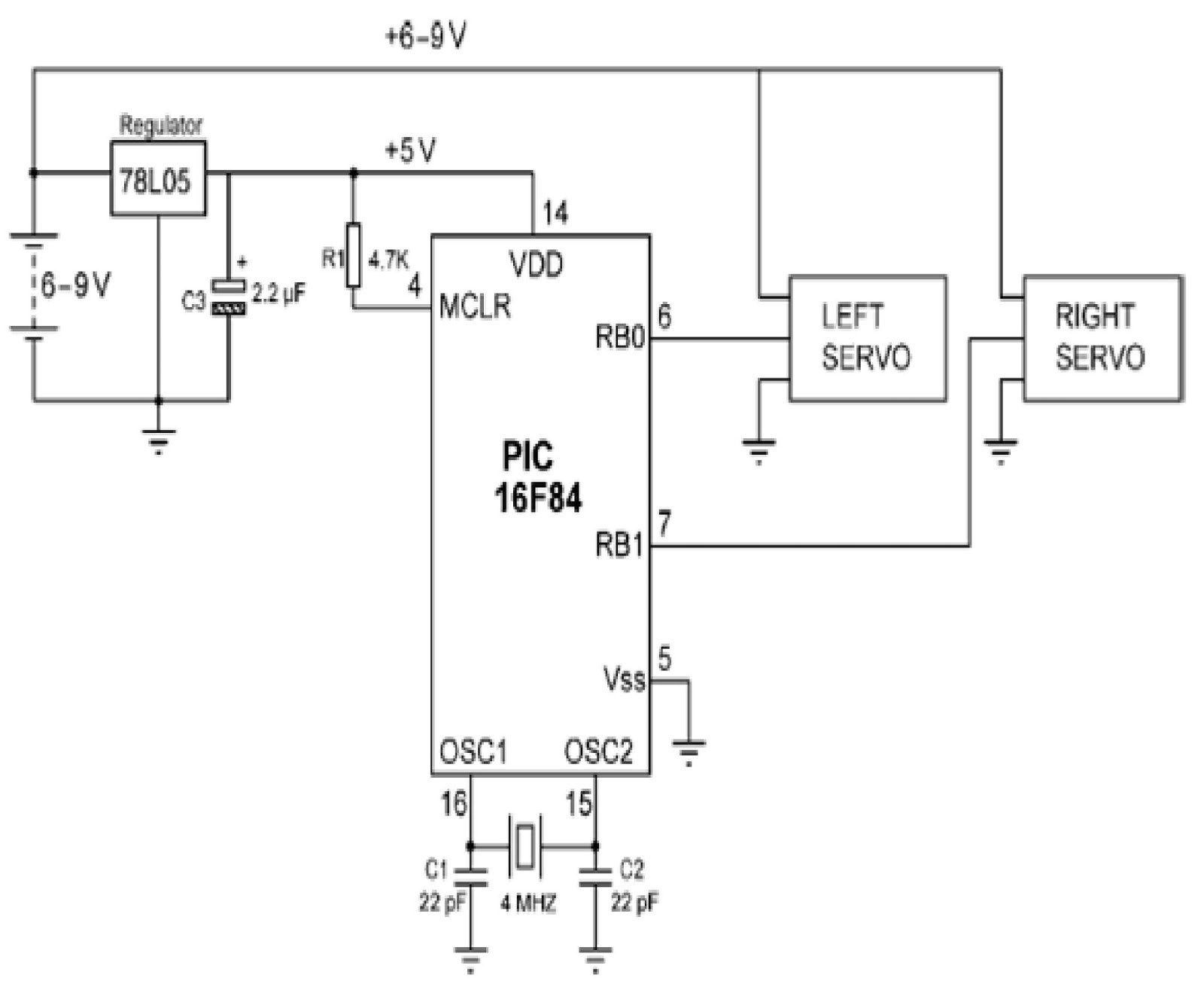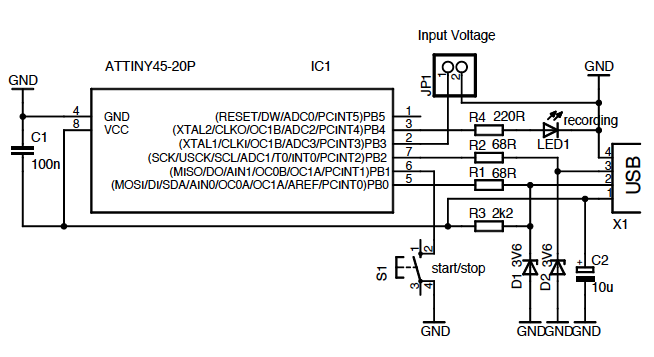
Fireflies based on tiny AVR
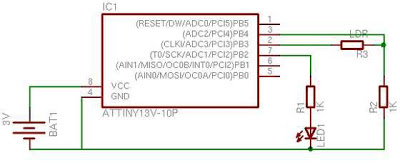
When first discovering this article, it was noted that it is a great project utilizing only a few components. Microcontroller projects based on LEDs are of particular interest. This project is very simple and worth trying. It is inspired by the fascinating phenomenon of firefly synchronization. Initially, fireflies flash randomly, but over time, influenced by one another, they begin to flash in unison. The underlying principle is straightforward: all fireflies have nearly the same flashing frequency, but their phases are shifted. When a firefly detects a flash from a neighboring firefly, it flashes slightly earlier. To enhance the experience, the assembly can be designed for 25 fireflies, with each firefly being self-contained and without an overall controller.
This project can be implemented using a series of microcontrollers, each controlling an individual LED that represents a firefly. The microcontrollers can be programmed to generate a random flashing pattern initially. As the project progresses, the microcontrollers can be designed to detect the light emitted by neighboring LEDs using light sensors or phototransistors. When a firefly detects a flash from a neighboring firefly, it adjusts its flashing timing slightly earlier, creating a synchronization effect.
The circuit design will include 25 microcontroller units, each connected to an LED and a light sensor. The microcontrollers can be powered by a common power supply, ensuring that all components operate under a stable voltage. Each microcontroller should be programmed with a unique identifier to avoid interference and ensure that they can communicate effectively with their neighbors.
In terms of components, the circuit will require:
- 25 microcontrollers (e.g., ATtiny85 or similar)
- 25 LEDs (preferably in a range of colors for visual effect)
- 25 phototransistors or light-dependent resistors (LDRs) for light detection
- Resistors to limit the current through the LEDs and to set the sensitivity of the light sensors
- A common power supply (e.g., 5V DC)
- A PCB to mount all components and ensure proper connections
The layout of the PCB should be designed to minimize the distance between each microcontroller and its corresponding LED and light sensor, which will help in reducing response time and improving synchronization accuracy. Proper decoupling capacitors should be included near each microcontroller to filter out noise from the power supply.
In summary, this project provides an engaging way to explore microcontroller programming, LED control, and the principles of synchronization, inspired by the natural behavior of fireflies. The result will be a visually captivating display that mirrors the enchanting phenomenon of nature.When firs time found this article, i think it`s a great project using only few component. I like microcontroller project based on LED. And as you know this project very simple. I must try it. one day "I was always fascinated by the emergence of patterns. One I like most is the synchronization of hundreds or thousands of fireflies. First they flash randomly but after some time and influencing each other, they flash in sync. The rule behind this is very simple. All fireflies have nearly the same frequency for their flashing, but their phase is shifted. If a firefly receives a flash of a neighbour firefly, it flashes slightly earlier. To make it interesting, assembly it on the board for 25 fireflies. Every single firefly is self contained, there is no over-all controller. Here is the picture 🔗 External reference
This project can be implemented using a series of microcontrollers, each controlling an individual LED that represents a firefly. The microcontrollers can be programmed to generate a random flashing pattern initially. As the project progresses, the microcontrollers can be designed to detect the light emitted by neighboring LEDs using light sensors or phototransistors. When a firefly detects a flash from a neighboring firefly, it adjusts its flashing timing slightly earlier, creating a synchronization effect.
The circuit design will include 25 microcontroller units, each connected to an LED and a light sensor. The microcontrollers can be powered by a common power supply, ensuring that all components operate under a stable voltage. Each microcontroller should be programmed with a unique identifier to avoid interference and ensure that they can communicate effectively with their neighbors.
In terms of components, the circuit will require:
- 25 microcontrollers (e.g., ATtiny85 or similar)
- 25 LEDs (preferably in a range of colors for visual effect)
- 25 phototransistors or light-dependent resistors (LDRs) for light detection
- Resistors to limit the current through the LEDs and to set the sensitivity of the light sensors
- A common power supply (e.g., 5V DC)
- A PCB to mount all components and ensure proper connections
The layout of the PCB should be designed to minimize the distance between each microcontroller and its corresponding LED and light sensor, which will help in reducing response time and improving synchronization accuracy. Proper decoupling capacitors should be included near each microcontroller to filter out noise from the power supply.
In summary, this project provides an engaging way to explore microcontroller programming, LED control, and the principles of synchronization, inspired by the natural behavior of fireflies. The result will be a visually captivating display that mirrors the enchanting phenomenon of nature.When firs time found this article, i think it`s a great project using only few component. I like microcontroller project based on LED. And as you know this project very simple. I must try it. one day "I was always fascinated by the emergence of patterns. One I like most is the synchronization of hundreds or thousands of fireflies. First they flash randomly but after some time and influencing each other, they flash in sync. The rule behind this is very simple. All fireflies have nearly the same frequency for their flashing, but their phase is shifted. If a firefly receives a flash of a neighbour firefly, it flashes slightly earlier. To make it interesting, assembly it on the board for 25 fireflies. Every single firefly is self contained, there is no over-all controller. Here is the picture 🔗 External reference
Warning: include(partials/cookie-banner.php): Failed to open stream: Permission denied in /var/www/html/nextgr/view-circuit.php on line 713
Warning: include(): Failed opening 'partials/cookie-banner.php' for inclusion (include_path='.:/usr/share/php') in /var/www/html/nextgr/view-circuit.php on line 713
